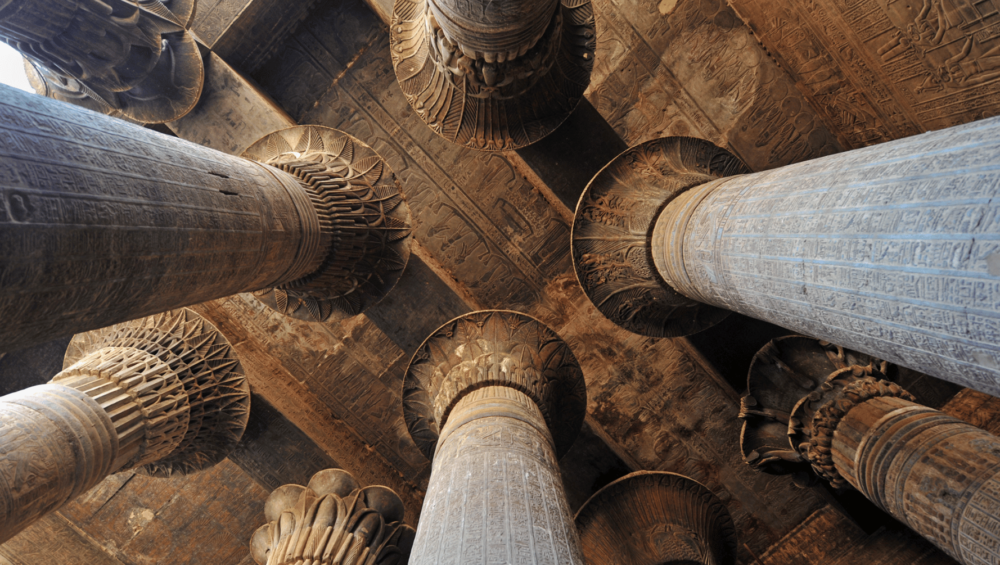The Temple of Esna is one of Egypt’s most fascinating ancient sites, offering a glimpse into the rich history and culture of the region.
Located in the modern town of Esna, this temple is a must-visit for history enthusiasts and travelers alike. In this article, we’ll explore the Temple of Esna in detail, answering key questions and highlighting its significance.
Where is the Temple of Esna Located?
The Temple of Esna is situated in the town of Esna, which lies on the west bank of the Nile River in Upper Egypt. This location made it a strategic and spiritual hub in ancient times.
The temple is easily accessible from Luxor, making it a popular stop for Nile River cruises.
When was the Temple of Esna Built?
The Temple of Esna dates back to the Ptolemaic and Roman periods, with construction believed to have begun around 180 BC. However, most of the temple’s structure was completed during the Roman era, particularly under Emperor Claudius.
The temple is dedicated to the god Khnum, the creator of life in ancient Egyptian mythology.
The Importance of Rituals in Ancient Esna Temples
The Temple of Esna was not just a place of worship but also a center for rituals and ceremonies. These rituals were integral to the spiritual life of ancient Egyptians, honoring Khnum and other deities.
The temple’s walls are adorned with intricate carvings and hieroglyphs depicting these sacred practices, offering a window into the past.
Email Us to Book Your Trip info@odysseysvoyage.com
Explore more at www.odysseysvoyage.com
The Modern Town of Esna
Today, the Temple of Esna is surrounded by the bustling modern town of Esna. While the temple itself is a relic of ancient times, the town offers a vibrant mix of culture, markets, and local life.
Visitors can explore the temple and then immerse themselves in the lively atmosphere of the town.
Why is the Temple of Esna Important?
The Temple of Esna holds immense historical and cultural significance. It is one of the best-preserved temples from the Ptolemaic and Roman eras, showcasing stunning architectural details and religious artistry.
The temple’s inscriptions provide valuable insights into ancient Egyptian beliefs and practices.
Is the Esna Temple Worth Visiting?
Absolutely! The Temple of Esna is a hidden gem that offers a unique experience away from the crowds of more famous sites like Karnak.
Its well-preserved hypostyle hall and detailed carvings make it a must-see for anyone interested in ancient history.
Email Us to Book Your Trip info@odysseysvoyage.com
Explore more at www.odysseysvoyage.com
Why is the Karnak Temple so famous?
While the Temple of Esna is a remarkable site, the Karnak Temple in Luxor often steals the spotlight due to its sheer size and grandeur.
However, the Temple of Esna offers a more intimate and equally enriching experience, making it a perfect addition to any Egyptian itinerary.
How Old is the Temple of Esna?
The Temple of Esna is over 2,000 years old, with its origins tracing back to the Ptolemaic period. Despite its age, the temple remains remarkably well-preserved, allowing visitors to step back in time and experience the grandeur of ancient Egypt.
Email Us to Book Your Trip info@odysseysvoyage.com
Explore more at www.odysseysvoyage.com
Khnum: The Creator God

Khnum, the ram-headed god, played an essential role in Egyptian belief. Egyptians regarded him as the creator of life, shaping humans and animals on his potter’s wheel. In addition to this, Khnum controlled the Nile’s waters, ensuring the fertility of the land. As a result, he became an integral figure in Egyptian cosmology. The Temple of Khnum was built to honor this powerful god and his vital role in sustaining Egypt.
Email Us to Book Your Trip info@odysseysvoyage.com
Explore more at www.odysseysvoyage.com
The Architecture and Features of Esna Temple

The Temple of Khnum in Esna features extraordinary architecture. It houses a grand hypostyle hall with 24 columns, each adorned with lotus and palm capitals. Furthermore, the walls of the temple are covered in intricate carvings that depict gods, kings, and sacred rituals. The design beautifully blends Egyptian and Greco-Roman styles, reflecting the evolution of the temple across different historical periods.
Email Us to Book Your Trip info@odysseysvoyage.com
Explore more at www.odysseysvoyage.com
The Celestial Ceiling and Astronomical Depictions

One of the most striking aspects of the temple is its astronomical ceiling. The ceiling features detailed images of zodiac signs, celestial bodies, and planetary movements. These illustrations provide a glimpse into the ancient Egyptians’ profound understanding of the cosmos. Moreover, the ceiling’s design merges Egyptian religious themes with Greco-Roman influence, highlighting the cultural fusion that occurred in the region.
Email Us to Book Your Trip info@odysseysvoyage.com
Explore more at www.odysseysvoyage.com
Recent Restoration Efforts

The ongoing restoration of the Temple of Khnum in Esna has uncovered hidden treasures. Notably, archaeologists revealed 46 birds depicted on the temple’s walls, some with the heads of goddesses Nekhbet and Wadjet. These discoveries, alongside a Roman-era engraving, highlight the temple’s rich history and artistry. Furthermore, the restoration has shed light on the ancient craftsmanship and iconography, showcasing Egypt’s dedication to preserving its heritage. This project, led by Egyptian and German teams, ensures that Egypt’s wonders remain accessible for future generations.
Email Us to Book Your Trip info@odysseysvoyage.com
Explore more at www.odysseysvoyage.com
Visit Esna Temple with Odysseys Voyage
Explore the Temple of Khnum with Odysseys Voyage and immerse yourself in Egypt’s lesser-known wonders. Moreover, our tailored Egypt Travel Packages offer exclusive opportunities to visit Esna and other hidden gems. As a result, you will gain a deeper understanding of Egypt’s rich cultural and architectural heritage.
Take the next step and book your adventure with us! Explore our Egypt Travel Packages and Dahabiya Cruises to begin your journey through ancient Egypt.
FAQ
Why is the Temple of Esna important?
The Temple of Esna is important for its historical, cultural, and religious significance, offering a glimpse into ancient Egyptian life.
Is the Esna temple worth visiting?
Yes, the Temple of Esna is worth visiting for its stunning architecture and unique insights into ancient rituals.
Why is the Karnak temple so famous?
The Karnak Temple is famous for its massive scale and historical importance, but the Temple of Esna offers a more intimate experience.
How old is the Temple of Esna?
The Temple of Esna is over 2,000 years old, dating back to the Ptolemaic and Roman periods.




